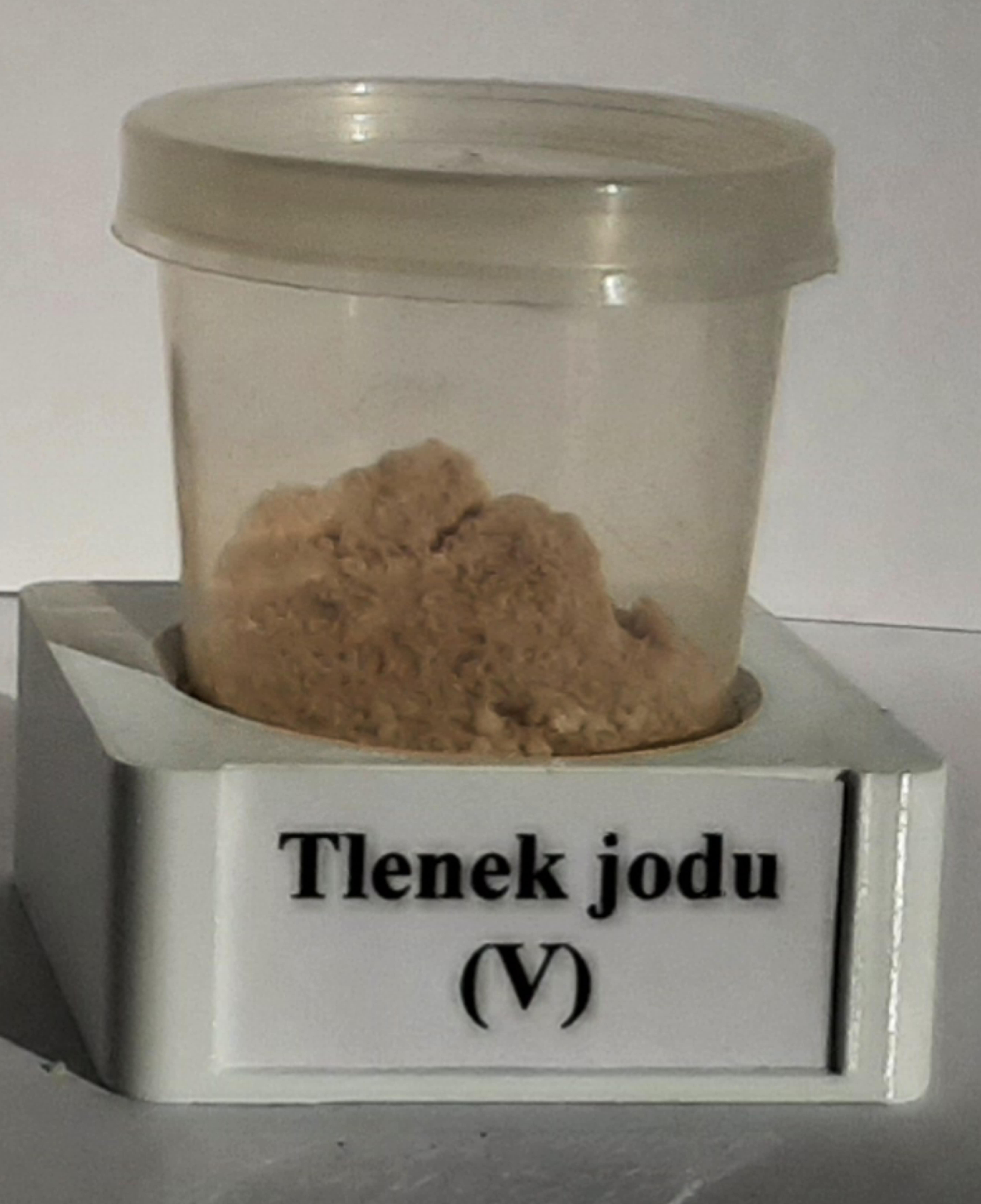
Iodine(V) oxide
solid
4.98 g/cm³
I2O5
white, silvery
An inorganic compound from the oxide group in which iodine occurs in the fifth oxidation state; it is the most stable of the halogen oxides and is the only oxide in this group with a positive heat of formation (43 kcal/mol); it is also the only halogen oxide in the fifth oxidation state and the only simple iodine oxide (the remaining compounds of iodine with oxygen are complex compounds and contain iodine atoms in various oxidation states); forms white, hygroscopic crystals that dissolve well in water and nitric acid; is a strong oxidant
Is used as an oxidant to detect carbon monoxide (CO) by quantitatively oxidizing it to carbon dioxide with the release of iodine, which can be determined by titration with sodium thiosulfate solution, and to remove carbon monoxide in order to purify the air and improve its overall quality
Was discovered independently by Joseph Louis Gay-Lussac and Humphry Davy in 1813; iodine(V) oxide is obtained by dehydration of iodic acid at a temperature above 170 oC


